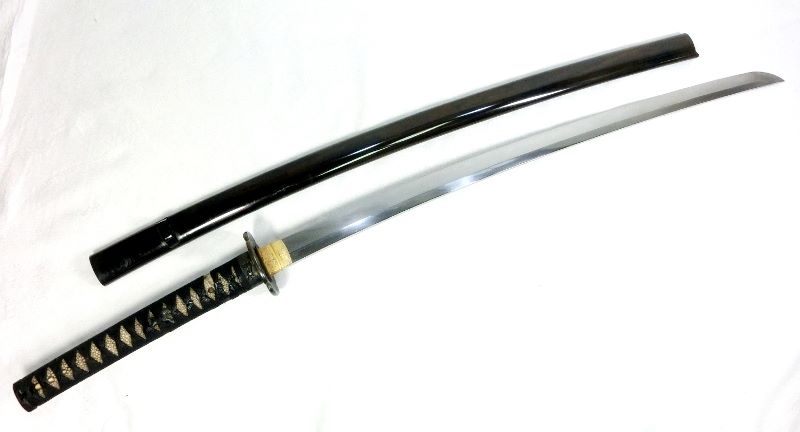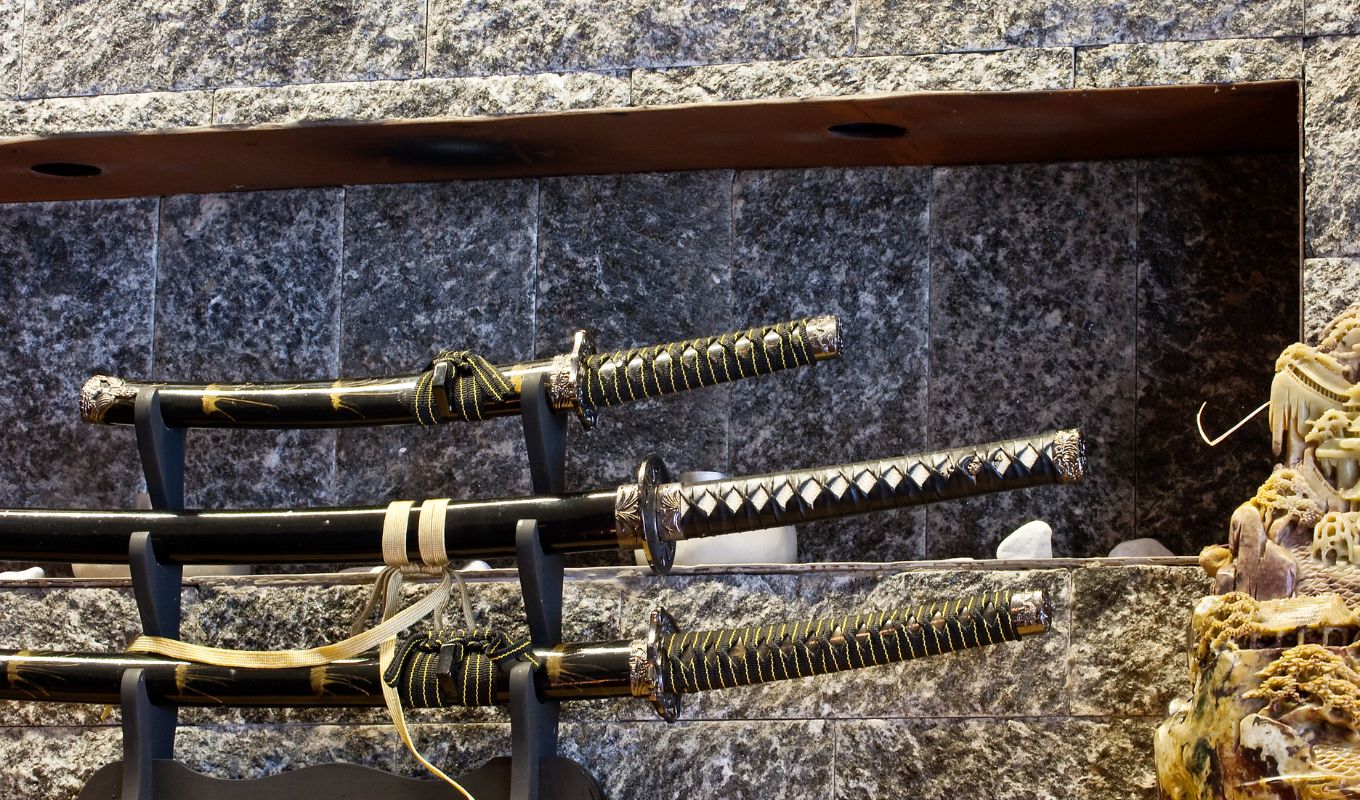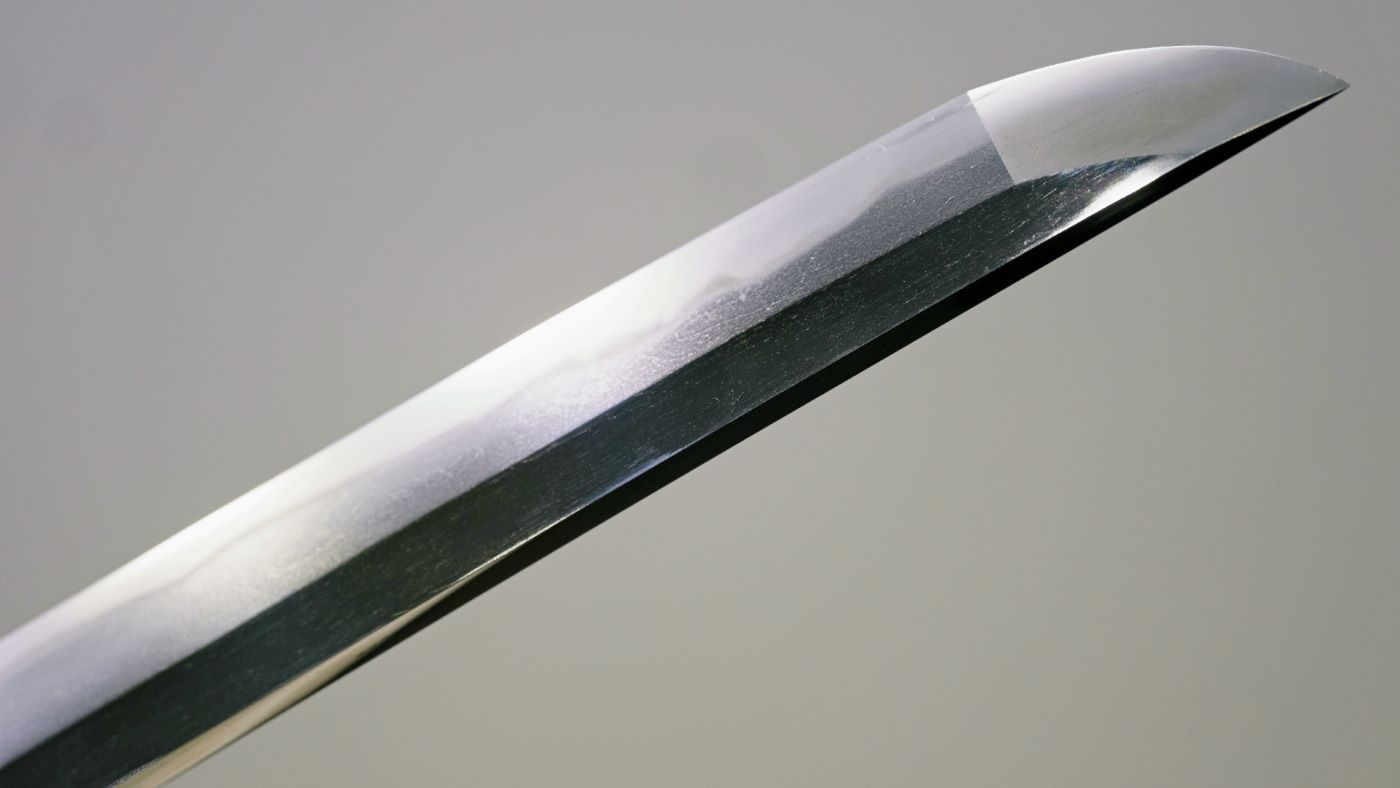Are you curious about traditional Japanese culture and how it influences modern Japanese society? One thing to be aware of prior to any stay in modern Japan is that people are specifically not allowed to wear a Japanese sword around in public, as the Japanese Samurai once commonly would have.
Swords Used To Be Common In The Age Of The Samurai

Shadow of a military commander with his sword
This banning of swords was part of the abolishment of the Samurai class, which was a relatively large number of people in the country of Japan around 150 years ago.
In a society that features a large portion of its population wearing a long blade or two as part of their daily fashion for hundreds of years, you might expect that the technology and skill of craftsmanship would likely have been refined to a spectacular quality over the years.

In this case, you would most certainly be correct and the legendary quality of Japanese blades is still famous throughout the world today.
What Is A Japanese Sword Called In Japanese?

Japanese swords from the Edo period
The iconic Japanese sword of the Samurai is known as a “Katana”. In Japan, it is also known as a “Nihon-to” (pronounced nee-hone-tow), which is simply a combination of the word Japan (Nihon) and sword (to) in order to specify a Japanese sword rather than a sword produced elsewhere.
History Of The Katana

The classical katana is a long and usually curved sword, featuring a single edge, and was supposedly carried by Samurai starting in the 1400s until around the turn of the 20th century when the new laws started to come into play.
A few hundred craftsmen in Japan are reportedly still producing authentic katana today, carrying on the tradition into the 21st century and possibly beyond. There is even a national association of sword makers in Japan and an annual competition where they can compare their products and share techniques.
How was The Shape Of Japanese Swords Devised?

Legend has it that a sword smith by the name of Amakuni invented the form which led to the modern style of katana and its folded steel process of sword making in around the year 700.
It is also evident that advances in Japanese sword technology arrived as an import from China and other areas.
The blade is made of two different metals, one as a harder outer jacket and a softer one as the center and edge. This gives the sword strength and enough flexibility to absorb shocks. It also makes a sharp edge easier to obtain.
Why Are Japanese Swords Curved?

The curve of a Japanese katana is seen as an advantage when used while on horseback and its evolution appears to be the result of such forms of combat. The curve seems to have evolved over the years and the stronger portion of the curve gradually made its way from the base of the blade to much nearer its tip.
Portions of the katana, such as the handguard and sheath, are often elaborately decorated and the fine brocade of the handle is usually quite intricate.
How To Buy A Japanese Sword?

If planning to purchase a sword in Japan to bring to another country with you, be aware that you are allowed to do so but there will most likely be some paperwork involved.
Just be thankful a Samurai-style head shaving isn’t a requirement.